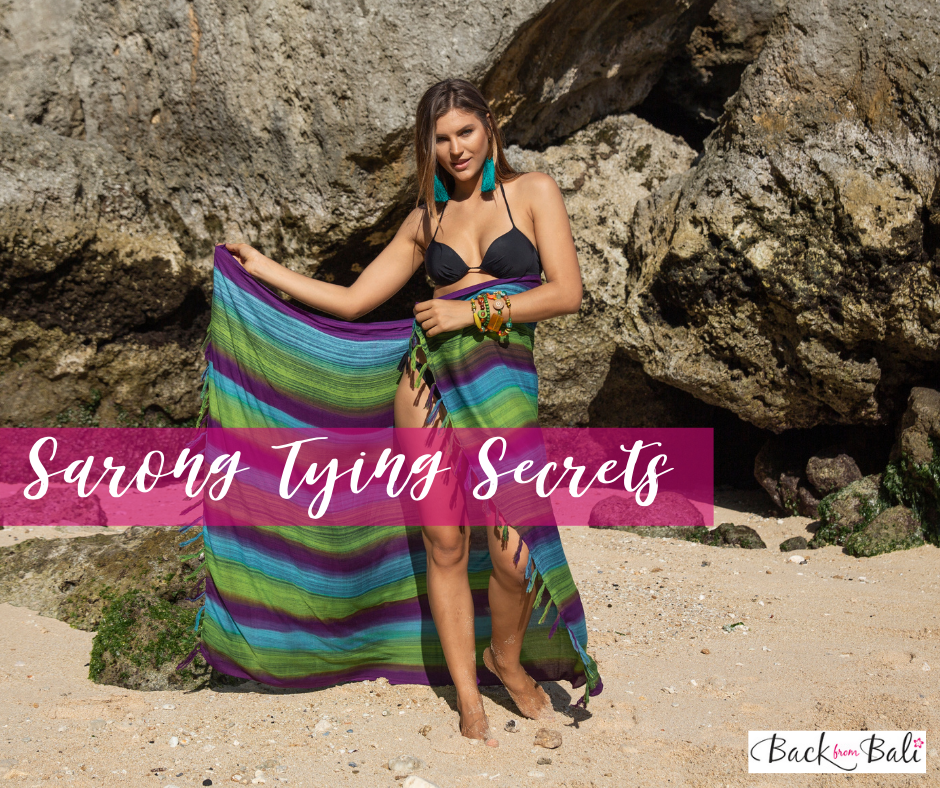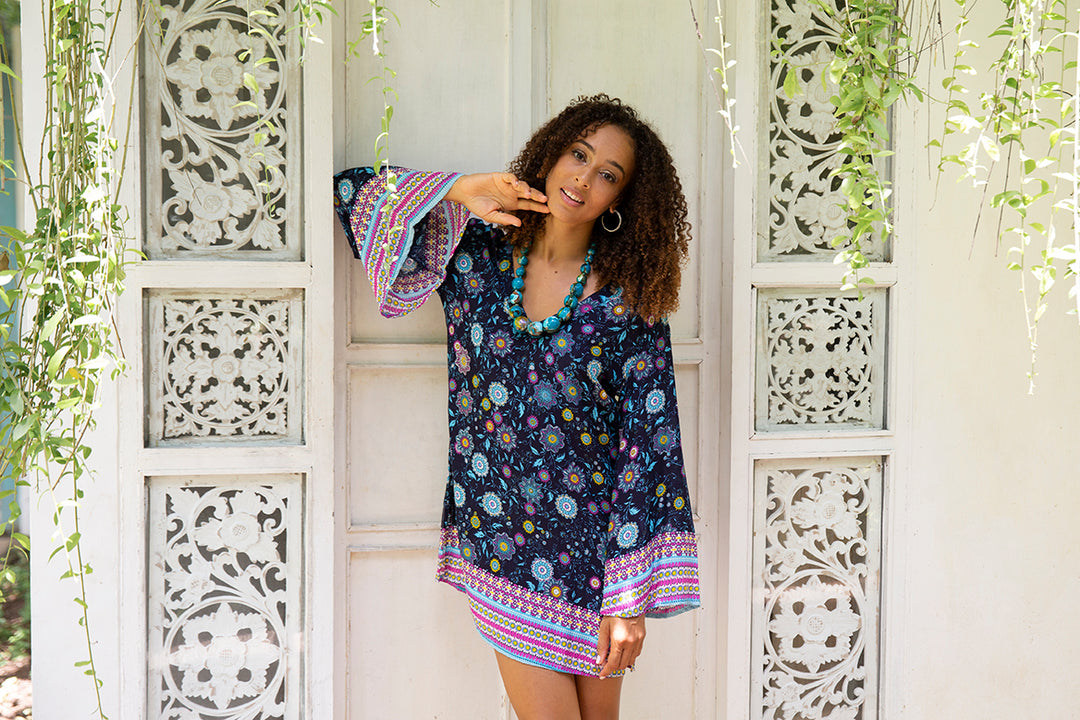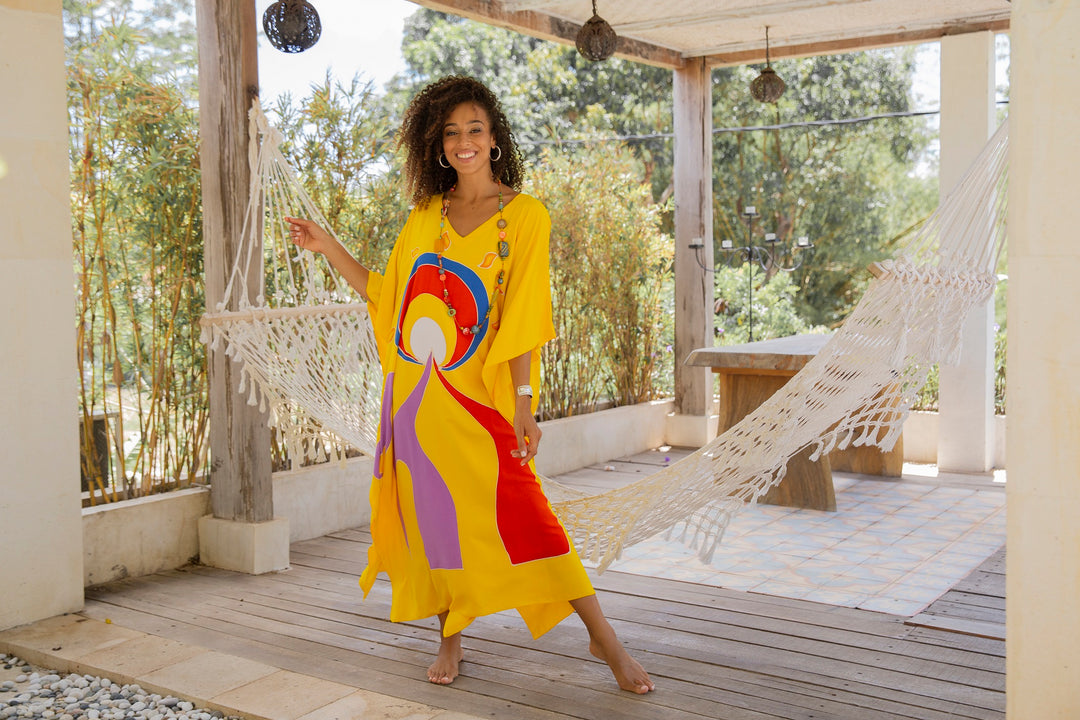Batik is really having a moment! This unique design style is showing up everywhere from fashion to home decorating. And what’s not to love?! With vibrant colors, unique patterns, and lovely flowing designs, every piece just brings you back to that island vacation and it’s so easy to add to any style or wardrobe.
So what is batik and how is it made (hint: truly authentic batik is a painstaking process requiring a true artist!). Traditional Indonesian batik methods use the “resist” style of creating designs. Fabric is first draped over a bamboo frame to allow air flow underneath. Next designs and outlines are drawn on the fabric and traced with hot wax. The fabric is then dyed and the areas covered in wax will resist the dye. The cloth underneath the wax will remain the original color.
This process is repeated over and over as more wax designs and dyes are applied to each piece. Batik masters are not only experts at drawing with hot wax but in layering vibrant colors of dye to create beautiful designs. This makes every piece unique and original to the artist creating it.
What is Authentic Batik?
Not all “batiks” sold today are made through this method. Some use stencils, some use etching, and many just screen-print designs to look like batik. How can you tell if your piece is real batik? Start by looking at both sides of the fabric. If the backside is lighter or not as vibrant, you’ll know the piece was printed and not real batik. Look, too, at the material – wax-drawn batik can only be applied to natural, fibrous fabrics (crepe, rayon, cotton, hemp, or silk).
Here at Back from Bali, we have chosen to stick to the traditional methods and have worked with the same family of artisans for decades. Together we’ve created unique designs that honor the batik tradition. Each piece is handmade and we are so proud to be partners with these folks in building their own businesses and having a positive impact within their community. We are committed to this relationship that both empowers these women, continues the tradition of beautiful batiks, and helps them build a future for their children.
We are always creating new batik patterns for our long and short caftan ponchos. The caftan series called Women, celebrate the beauty of women. Click here to see the short poncho. And here to see the Long Poncho.
This year our new design is called Women Sun, it shows two women with a shining sun above them. Check it out!
Want a more in depth look at the process? Read on for more . . .
Batik is one of Indonesia’s oldest art forms and it’s considered a part of their ancient artistic tradition. For centuries these artisans have been practicing the art of decorating cloth with wax and dye.
Because the batik design method depends on the cloth absorbing the wax properly, only natural materials with high thread counts will work. Cloth must be high quality so the designs retain their intricate wax-drawn lines. Prior to dyeing, the cloth is washed and boiled multiple times so any impurities are removed and the fabric is ready to receive the wax. Before machine-made cloth, fabric was also pounded or hammered to make it smooth and supple prior to applying the design.
Unique Tools Designed for Batiking
Batiking tools are unique to Indonesia, some having been invented solely for this purpose. Two methods are used to apply the wax and often are combined for larger pieces. The first is hand drawing designs using a canting tool (pronounced “chanting). This tool has a small copper container with a spout which is connected to a bamboo handle. The container comes in a range of sizes so the artist can draw everything from very fine lines to larger swaths in a design. The copper part is filled with melted wax and used just like a pen. In some cases, the mouth of the canting tool will be covered with a wad of cotton so the wax can be brushed over large areas.
The second method is a little faster as it uses a stamp to cover large areas at once. This copper stamp is called a tjap (pronounced “chop”) and it is made to precisely match the design outlines or areas to which wax will be applied. Each tjap makes up a portion of the design so they are easier to handle.
Indonesians have also developed the best waxes and most shops closely guard their recipe. In most cases, waxes used are a combination of beeswax and paraffin. Some add resins to increase their adhesive qualities or natural animal fats to improve liquidity. Typically, the highest quality wax is reserved for the most intricate designs.
Traditional batik designs use patterns that have been handed down for generations. But even then, the artisan uses a stencil or pattern to draw the design on the fabric. Some also use a light table to illuminate the pattern from below. With hand-drawn designs, the lines are usually laid in with charcoal or graphite before canting.
Before applying the wax, the fabric is draped on a bamboo frame that is open underneath so the air can flow through to cool and harden the wax. The wax is then heated and applied over the lines. If using the tjap method, the tjap is dipped into container of melted wax that holds a folded piece of cloth just under the surface. This cloth is saturated with melted wax and acts somewhat as a stamp pad. The tjap is pressed into this fabric until the design is covered with melted wax. This is then pressed onto the piece, repeating until the design is complete. Many times, batiks are made using both the tjap and the canting methods.
To ensure the pattern is well defined, batik is waxed on both sides of the fabric (this is called tulis batik and the pattern is identical on both sides of the cloth). This is a precise process and misplaced wax is very difficult to remove from fabric.
Traditional batik dyes are made from natural ingredients and the oldest color known to be used in batik was blue made from the leaves of the Indigo plant. Once the wax is applied, the fabric will be immersed in its first dye bath. The longer the fabric is allowed to sit in the dye, the deeper the color will become. The fabric is removed from the dye and placed in cold water to harden the wax. The fabric is then dried and once again put through the waxing process. This time wax is applied over the areas that the artisan wants to stay the newly dyed color. This process is repeated for all the colors until finished. When finished, the piece stays on the frame and is moved into the sun where it will be naturally baked, setting the dye and melting away the wax.





